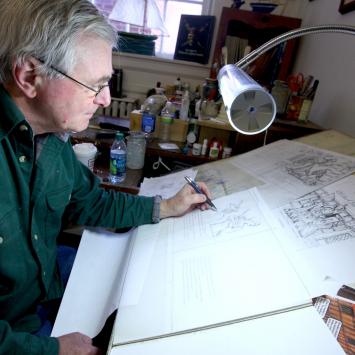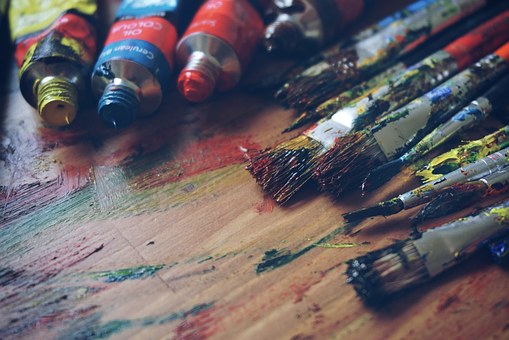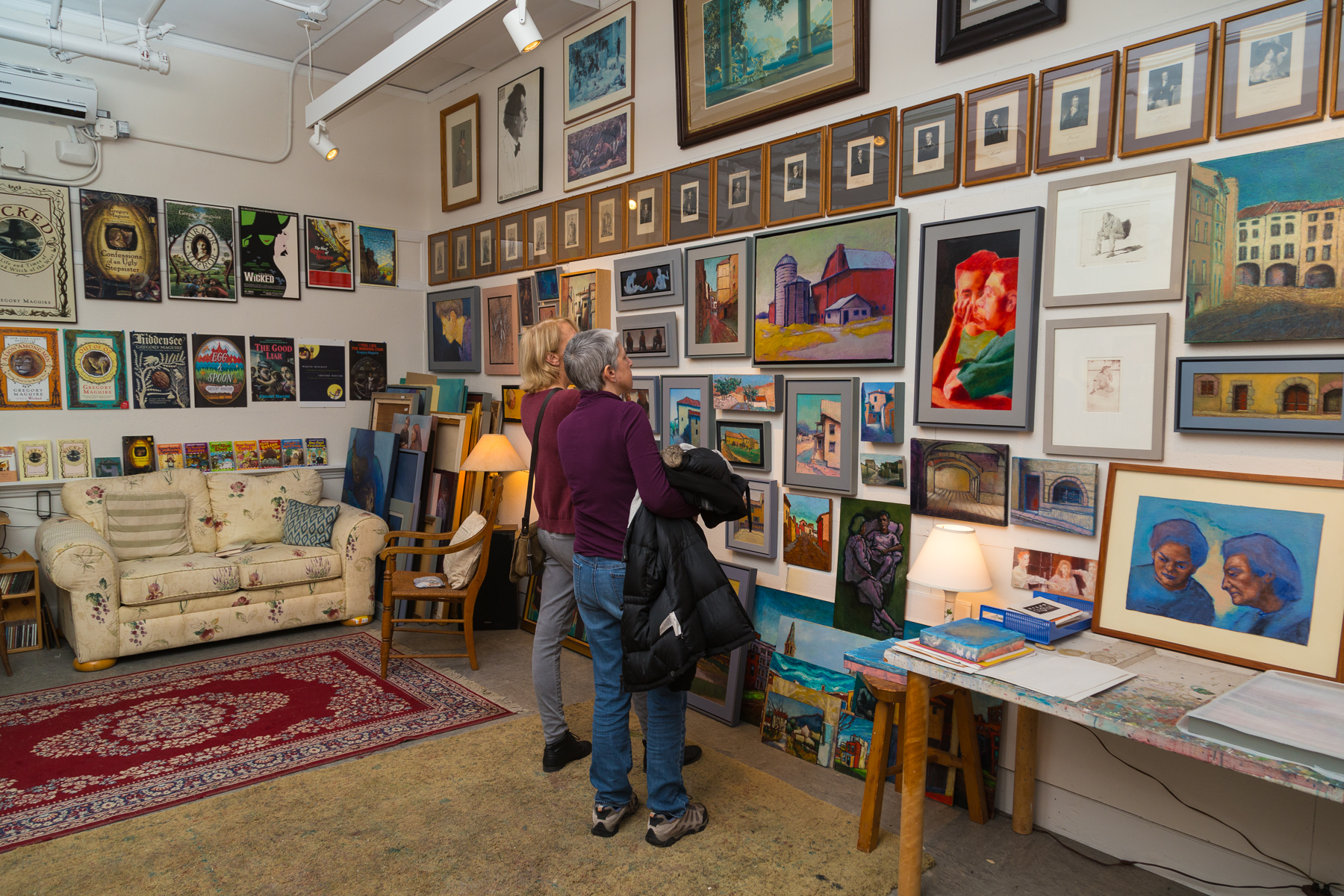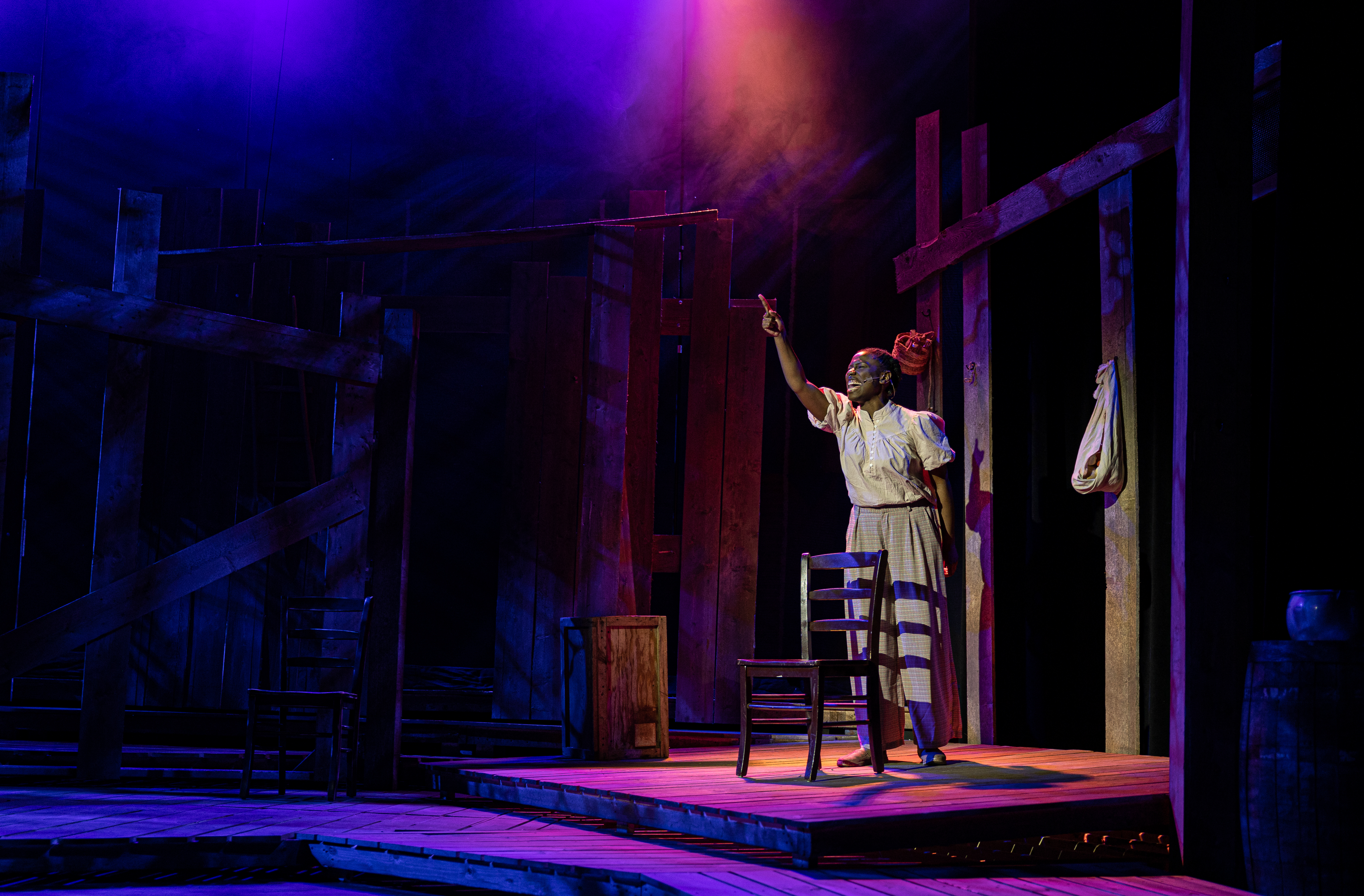Artist Spotlight: Wayne Geehan
January 27, 2015 by Laura

“I was never good at math,” says Wayne Geehan, a resident artist at The Umbrella. In his studio of seven years, across from a crackling fire in a brick-laden hearth—“painted,” he explains, “for a play”—and surrounded by portraits of swashbuckling pirates—characters for an aspiring board game—lay several stacks of books with medieval knights and castles adorning the covers. Wayne is the illustrator of the successful Sir Cumference math adventure series. The irony is not lost on him. “Luckily someone else figures out the math part.”
Wayne has been a freelance artist for over thirty years. His paintings show a remarkable aptitude for fantasy and his work has taken shape in the form of book covers, puzzles, games and children’s book illustrations. Much of his inspiration stems from childhood, growing up in 1950s Connecticut at the height of the baby boomer generation. He spent a lot of time outdoors, playing with the neighborhood children, building forts and using his imagination.
With no fine art museums around he found himself drawn to the covers of comic books, magazines and fantasy novels—particularly the illustrations of N.C. Wyeth, the artist behind Treasure Island. After attending The Art Institute of Boston and a stint in the Army he found work with a jigsaw puzzle company based in Watertown. He worked in the commercial end of the business, assisting in package design, but was eventually approached to paint a puzzle.
“This was the first illustration I did that was published.” He gestures to a flying pterodactyl attacking another dinosaur submerged in dark ocean water, framed above his workstation as a reminder of his humble beginnings. “I set myself little goals, and still that’s the way I look at it today. The first thing I wanted to do was get into the art field, period. I didn’t care what I did.”
After working in the company for a few years he decided to go into freelance art, gaining clients from the Army Corps of Engineers to Jiffy Lube. These days he does fewer renderings of buildings and more vivid scenes of fantasy. But despite his talents, Wayne never thought of himself as an artist. “I really wanted to be an archeologist,” he admits, “because I thought digging into old ruins would be fun. I wanted to be an adventurer.”
And so his lengthy career has allowed him the best of both worlds, the chance for adventure gleamed with the glide of a pencil or the stroke of a brush. His studio bristles with this peculiar sense of wonder and exploration: wooden ships with white sails perched upon window sills and bookshelves, a happily cluttered desk piled with jars of pencils and paintbrushes, a freshly painted wolf gracing the skin of a nearby canvas.
But success did not come easy for Wayne. At the age of thirty he was diagnosed with multiple sclerosis, a disease that affected the right side of his body and left him heavily reliant on a cane. Many artists, their hands their most valuable asset, would be devastated by this news. Wayne, however, was undeterred. He continued to paint, married his long time girlfriend—his wife, Susan—and started a family.
“It’s something you put behind you and you move on,” he says with a shrug. “That’s the way I’ve lived my whole life. There were things I couldn’t do with my kids growing up, but I compensated in other ways. I don’t think about it, really.”
Luckily the MS was a slow progression—so gradual that one day he looked at his left hand and realized he was drawing with it. “I was always right handed. But you’re focused on your art. You’re focused on what you’re doing. As my hand got weaker and weaker I would just pick it up with my left and keep on going.” Instead of a decline in quality, however, something clicked. He started “seeing things from the other side of the brain” and found that his work actually improved.
Now, his days of hustling with a portfolio under his arm behind him, Wayne spends most of his time at The Umbrella, often leaving his door open so other artists can drop in. He enjoys going around the building, visiting artists in various mediums and employing different techniques than his own. “I’m always learning new things, all the time. Most of my friends are retired and I’m still out here at the studio because I love it. That’s why I’m here. I don’t find it work, I find it fun.”
For those who might not have the same conviction, he offers this advice:
“You’ve got to enjoy life. No matter when I go to that great art department in the sky I know I’ll say I had a good run—even though I can’t run,” he jokes. “You’ve got to enjoy what you’re doing. I mean, what’s the point then?”
---
Written by Rebecca Ritchey






